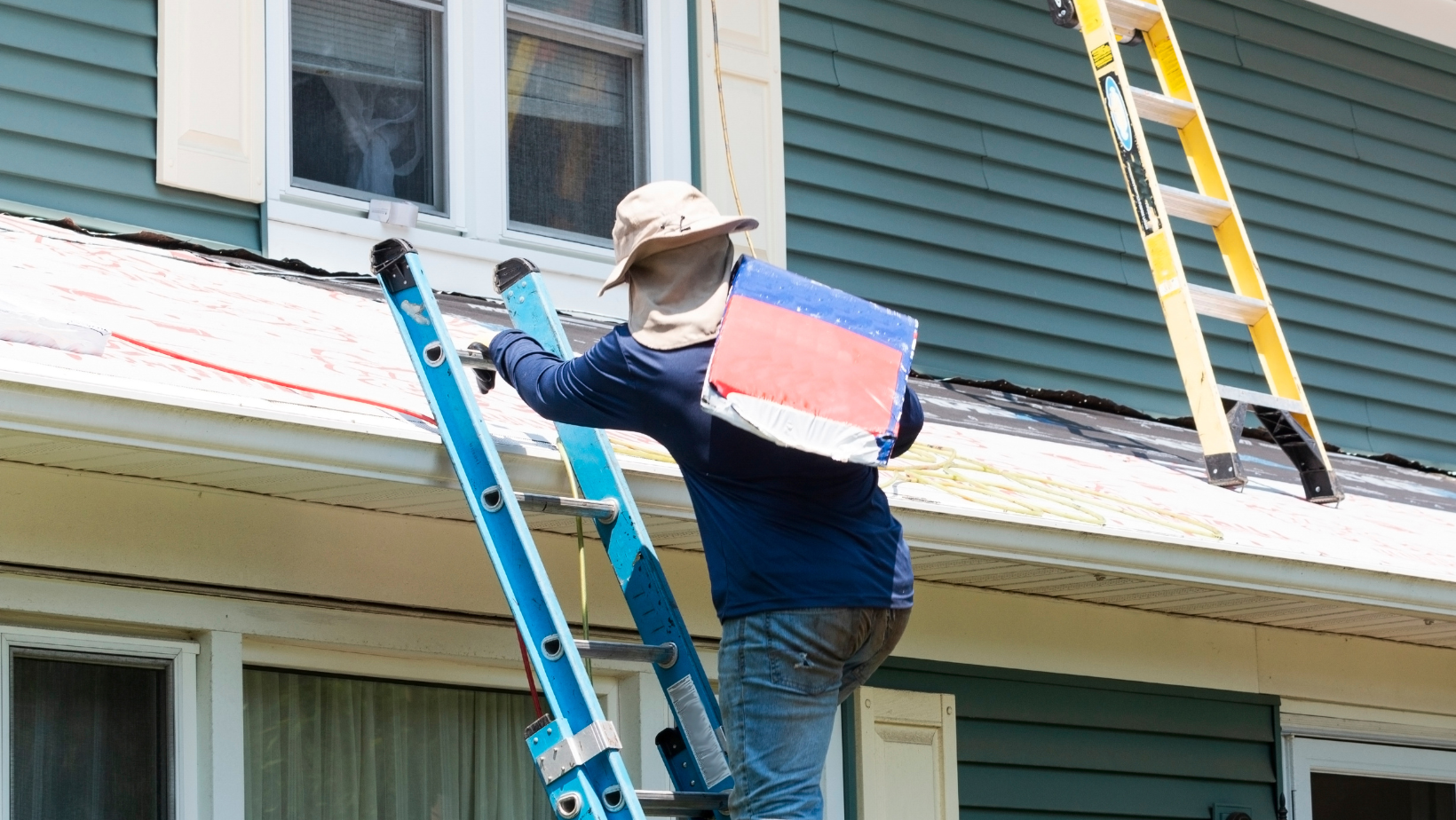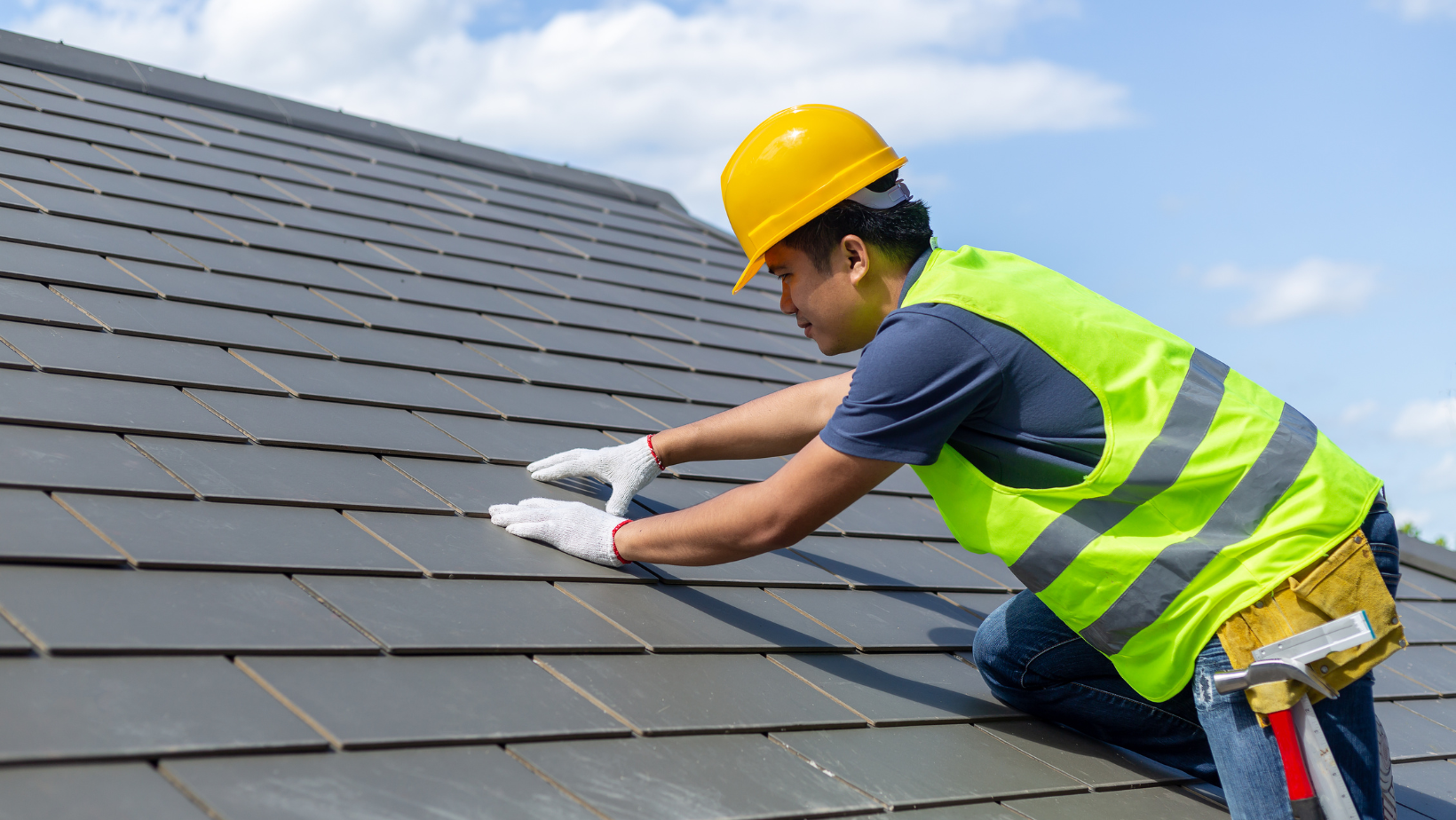The Cost of Roof Replacement: What You Need to Know
Replacing a roof is a significant investment, and understanding the costs is paramount. The price can also vary based on your geographical location and the project’s complexity. Awareness of these factors is crucial to budgeting appropriately and ensuring you get a fair and reasonable quote.
Unanticipated costs can be a nasty surprise in the midst of a substantial home improvement project like roof replacement. As a homeowner, gaining insight into the costs associated with roof replacement can empower you to make informed decisions and potentially save you from unnecessary expenses. Stay with us as we delve deeper into roof cost replacements.
Factors that Influence Cost of Roof Replacement

As mentioned earlier, there are several factors that can affect the cost of replacing a roof. Let’s look at some significant factors that influence these costs:
Size and Pitch of the Roof
One of the primary factors that influence partial roof replacement cost is the size and pitch of your roof. The larger and steeper your roof, the more materials will be needed, resulting in higher costs. A steep roof also tends to be more challenging to work on, which can increase labor costs.
For example, a 2,000-square-foot ranch-style home with a gentle slope roof may cost around $6,000 to replace, while a 2,500-square-foot colonial-style home with a steeper roof could cost upwards of $9,000. It’s essential to get accurate measurements and pitches of your roof before requesting quotes from contractors to avoid any surprises in the final cost.
Type of Roof
The type of roof material is another significant determinant of the entire roof replacement cost. Different materials come with varying costs and lifespans. Hence, there is a need to explore the options available and make an informed choice that suits your budget and aesthetic preference.
For instance, due to affordability and easy installation, asphalt shingles, a common choice for many homeowners, can cost between $350 to $500 per square foot. On the other hand, a more durable and visually appealing option, like clay or concrete tiles, can cost between $600 to $800 per square. However, it’s vital to remember that these prices fluctuate depending on your brand, quality, and region.
Roofing Contractor’s Labor Costs
Labor costs for roofing contractors significantly influence the total price of roof repairs. This cost generally includes the wages of the roofing crew, their expertise, and the project’s geographical location. Contractors with extensive experience and a robust reputation in the industry might command higher fees due to their proven reliability and the assurance they bring to the job.
These professionals understand that roof replacement is not just about slapping on new shingles; it involves meticulous inspection of the existing roof, identifying potential issues, and ensuring a top-notch installation that guarantees longevity. For instance, in a region with a high cost of living, a reputable roofing company might charge $80-$100 per hour, while in a less expensive area, the same company might charge $50-$70 per hour. Researching and considering various contractors’ labor costs before hiring one for your project is crucial. This will help you find a balance between quality and cost-effectiveness.
Roofing Material Removal
Labor isn’t just limited to installing new shingles; it also includes removing and disposing of old roofing materials. This process can significantly contribute to the overall cost, especially if your home has multiple layers of basic asphalt shingles or is covered with materials that require special handling, such as asbestos. The size and accessibility of your roof can also affect this cost, as it may require additional labor and equipment to remove the materials safely.
For instance, a simple asphalt shingle roof removal can cost around $1,000, while removing a multi-layered and asbestos-containing roof could cost upwards of $10,000. It’s essential to discuss this beforehand with your contractor to avoid any surprises in the final bill.
Additional Structural Repair
Additional structural repairs significantly affect the overall cost of roof replacement, as these repairs often involve extensive labor and material costs. When replacing a roof, it’s not uncommon to uncover underlying structural issues that need to be addressed, such as damaged decking or support beams, problems caused by water infiltration, or even pests. The cost of these repairs can quickly mount, particularly if the damage is extensive or requires specialized skills to fix.
For instance, replacing a few damaged boards in the roof decking might cost a few hundred dollars, but if the damage extends to the support beams, costs could escalate into the thousands. Hence, it’s crucial to thoroughly evaluate your roof before starting the replacement project to understand the potential for additional structural repairs. This proactive approach can help you plan your budget more accurately and ensure a durable, long-lasting roof replacement.
Geographic Location and Building Codes
Geographic location and building codes can also significantly affect roof replacement costs. If you live in an area with high labor or material costs, it’s likely that your overall project cost will be higher than in other regions. Additionally, some areas have specific building codes that contractors must adhere to, which may require additional materials or labor, thus increasing costs.
For example, if you live in an area prone to hurricanes or heavy snowfall, your roofing contractor may need to use specialized materials and techniques to withstand these weather conditions, ultimately increasing the cost of your project. Similarly, certain building codes may require specific fire resistance or energy efficiency materials, adding to the overall cost. Hence, before starting the project, consulting with your contractor and local building authorities is crucial to understand any potential roof pitch implications due to geographic location or building codes.
Roofing Contractor’s Reputation and Guarantees
As mentioned earlier, hiring a reputable roofing contractor can significantly contribute to the overall cost of roof replacement. However, paying extra for quality workmanship and expertise is worth it in the long run. A reliable contractor will guarantee their work, giving you peace of mind that any issues with your new roof will be addressed promptly at no additional cost.
They may also offer warranties on materials, ensuring your investment is protected for years. Hence, it’s essential to research and consider a contractor’s reputation and guarantees when choosing one for your roof replacement project.
Why Is it Important to Understand Roof Replacement Costs?

Understanding the factors influencing roof replacement costs is crucial for any homeowner looking to replace their roof. Here are the reasons why:
Planning and Budgeting
Proper planning and budgeting are the cornerstones of any successful roof replacement project. As a homeowner, a clear understanding of the cost factors involved in roof replacement allows you to create an accurate financial plan, preventing surprises and ensuring a smooth project execution. It enables you to allocate funds appropriately, assess the feasibility of your preferred roofing materials, and select a reputable contractor who can deliver quality work within your budget.
For instance, if your geographic location and local building codes require specialized, high-grade materials and techniques, you can anticipate and allot funds for these additional costs upfront. This might mean prioritizing this over other aesthetic choices to ensure the functionality and durability of your new roof. Without this in-depth understanding, you could face unforeseen expenses mid-project, causing delays, compromising the quality of work, or even bringing the project to a halt.
Comparing Quotes
Understanding the breakdown of roof replacement costs empowers homeowners during the process of comparing quotes from different contractors. Given a roof replacement’s significant financial commitment, it is essential to consider and compare multiple quotes before deciding. Each quote should include a detailed breakdown of material costs, labor charges, waste disposal fees, and any additional costs for structural repairs or unique building code requirements.
This detailed analysis enables homeowners to compare apples to apples, ensuring they’re not overpaying for any aspect of the replacement project. For example, if one contractor’s quote is significantly higher due to labor costs, but all other factors are relatively similar, it might be worth exploring why their labor rates are higher. Perhaps they invest more in training and certifications for their team, ensuring a higher quality of workmanship that may justify the additional expense. t.
Understanding the Value of Materials
Roofing materials account for a significant portion of the overall roof replacement cost, and understanding their value is crucial in selecting the right materials for your home. Different roofing materials have varying levels of durability, longevity, and maintenance requirements, which can significantly impact your long-term costs. For example, while asphalt shingles may be more affordable upfront, they have a shorter lifespan than metal roofs, requiring earlier replacements and increasing long-term costs.
Additionally, understanding the value of materials can help you make informed decisions on any eco-friendly or energy-efficient options that may have slightly higher upfront costs but offer significant savings in the long run.
Avoiding Hidden Costs
Homeowners may fall victim to hidden or unexpected expenses without a clear understanding of all the factors affecting roof replacement costs. These could include structural damages discovered during the removal of the old roof, additional materials needed due to unique building codes, or unforeseen labor needs.
By educating yourself on the potential cost implications and conducting thorough evaluations before starting the project, you can avoid these hidden costs and ensure your project stays within budget.
Preventing Overspending
Having a thorough understanding of the complexities surrounding roof replacement costs is crucial to avoid overspending. You can prevent unnecessary expenditures on your project by grasping the factors that drive these costs, such as material selection, labor expenses, waste disposal fees, and potential code-related upgrades. For instance, you might be enticed by the allure of high-end slate roofing without realizing the significant cost implications.
Not only are the materials expensive, but the additional labor costs due to the heavier weight and the complexity of installation can catch you off guard. Similarly, neglecting the importance of a comprehensive initial inspection can lead to unexpected expenses for unforeseen structural repairs. By proactively comprehending these costs upfront, you can make informed decisions that strike a balance between your roof’s aesthetic appeal, functionality, and longevity, all while staying within your budget.
Ensuring Quality Work
Ensuring quality work is crucial for any roof replacement project, as it directly impacts the safety and longevity of your home’s roof. By understanding the cost factors involved in a replacement, you can ensure that you are not sacrificing quality to cut costs. Quality materials, skilled labor, and proper installation techniques all come at a price, but they are essential for a long-lasting and durable roof.
For example, a low-priced contractor may offer to replace your roof at a lower cost than others. However, they might use cheaper materials or cut corners on labor costs to achieve this price point, resulting in subpar workmanship and a weaker roof structure. This can lead to frequent repairs and replacements in the future, ultimately costing you more than if you had initially invested in a higher-quality contractor. Understanding the cost breakdown and prioritizing quality over cost can help avoid such situations and ensure that your roof replacement project is completed to the highest standards.
What To Avoid Doing When Considering Roof Replacement Costs

When it comes to roof replacement, there are also some things you should avoid doing. These include:
Avoid Making Assumptions
Never make assumptions when it comes to roof replacement costs. Assumptions can lead to miscalculations and result in budget overruns. For instance, you may assume a cheaper DIY roof replacement material will save you money without considering durability, maintenance requirements, and potential future repairs or replacements.
Ignoring these aspects can lead to higher long-term costs despite the lower initial investment. An example would be choosing a low-cost roofing material like asphalt shingles without considering that they may need replacement every 12-20 years, which can add substantial costs over time. On the other hand, materials like slate or metal may have a higher upfront cost but can last up to 50-75 years, ultimately resulting in cost savings in the long run.
Avoid Ignoring the Importance of Inspections
Neglecting or skimping on initial inspections can also lead to unexpected roofing costs during a roof replacement project. A comprehensive inspection by a trusted roofing professional can help identify any underlying issues that could impact your project’s cost, such as structural damages or ventilation problems.
Failing to address these issues beforehand can lead to additional costs during the project or in the future. Therefore, it is essential to prioritize a thorough inspection before starting any roof replacement work.
Avoid Using Unlicensed Contractors
One of homeowners’ biggest mistakes when considering roof replacement costs is hiring unlicensed or inexperienced contractors solely based on lower prices. While these contractors may offer cheaper services, they may not have the necessary skills, experience, or insurance to ensure quality work.
This can lead to costly mistakes and poor workmanship that could ultimately cost you more in repairs or early replacements. To avoid this, always research and hire licensed contractors with a proven track record of quality work.
Avoid Not Considering Long-Term Costs
Many homeowners only focus on the immediate roof replacement costs without considering the long-term expenses. This can lead to overspending on cheaper materials or labor that may not withstand harsh weather conditions or last as long as higher-quality options.
It is essential to factor in both short-term and long-term costs when evaluating your roof replacement options to make an informed decision that provides the best value for your money.
Conclusion
In conclusion, understanding the true cost of a roof replacement involves more than just considering the immediate price tag. You must consider many factors, including the quality of materials, labor costs, the importance of professional inspections, and the potential long-term costs. Avoid making assumptions, neglecting inspections, hiring unlicensed contractors, or focusing solely on immediate costs.
Instead, make well-informed decisions that balance immediate expenses and long-term value. By doing so, you can ensure a successful roof replacement project that not only enhances the aesthetic appeal of your home but also serves as a long-lasting, cost-effective solution.
